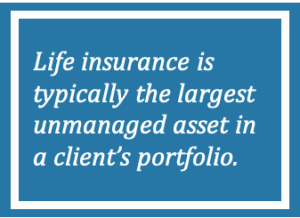See This Report about Pacific Prime
Wiki Article
The Facts About Pacific Prime Revealed
Table of ContentsSome Of Pacific PrimeThe 45-Second Trick For Pacific PrimeNot known Facts About Pacific PrimeThe 3-Minute Rule for Pacific PrimeThe Facts About Pacific Prime Uncovered

This is since the information were gathered for a duration of solid economic efficiency. Of the approximated 42 million people who were without insurance, just about regarding 420,000 (regarding 1 percent) were under 65 years of age, the age at which most Americans come to be eligible for Medicare; 32 million were grownups between ages 18 and 65, around 19 percent of all grownups in this age; and 10 million were youngsters under 18 years old, about 13.9 percent of all children (Mills, 2000).
These quotes of the number of individuals uninsured are generated from the yearly March Supplement to the Current Population Survey (CPS), conducted by the Census Bureau. Unless otherwise kept in mind, national quotes of individuals without medical insurance and proportions of the populace with various kinds of insurance coverage are based on the CPS, the most commonly utilized resource of estimates of insurance protection and uninsurance rates.
See This Report on Pacific Prime

Still, the CPS is especially helpful due to the fact that it produces annual price quotes reasonably rapidly, reporting the previous year's insurance policy protection approximates each September, and due to the fact that it is the basis for a regular set of quotes for greater than two decades, enabling analysis of trends in coverage in time. For these reasons, along with the substantial usage of the CPS in other research studies of insurance protection that are provided in this report, we depend on CPS estimates, with constraints noted.

The price quote of the variety of uninsured individuals broadens when a population's insurance standing is tracked for a number of years. Over a three-year duration beginning early in 1993, 72 million people, 29 percent of the U.S. https://moz.com/community/q/user/pacificpr1me. populace, lacked insurance coverage for at least one month. Within a solitary year (1994 ), 53 million individuals experienced at the very least a month without protection (Bennefield, 1998a)
Six out of every ten without insurance adults are themselves employed. Although working does boost the probability that a person and one's member of the family will certainly have insurance policy, it is not a guarantee. Also participants of family members with 2 full time wage earners have virtually a one-in-ten opportunity of being without insurance (9.1 percent uninsured price) (Hoffman and Pohl, 2000).
The 15-Second Trick For Pacific Prime
New immigrants represent a considerable percentage of people without medical insurance. One evaluation has connected a considerable section of the recent growth in the dimension of the U.S. uninsured populace to immigrants that arrived in the nation in between 1994 and 1998 (Camarota and Edwards, 2000). Recent immigrants (those who came to the United States within the past 4 years) do have a high price of being without insurance (46 percent), yet they and their youngsters account for just 6 percent of those without insurance nationally (Holahan et al., 2001).The relationship in between medical insurance and accessibility to care is well established, as documented later on in this phase. The connection in between health and wellness insurance coverage and wellness end results is neither straight nor basic, a considerable professional and wellness solutions research study literature links health and wellness insurance coverage to better accessibility to care, much better high quality, and enhanced personal and populace wellness condition.
Degrees of evaluation for taking a look at the effects of uninsurance. It concentrates particularly on those without any kind of health insurance for any type of length of time.
Pacific Prime - The Facts
The issues dealt with by the underinsured are in some aspects similar to those faced by the uninsured, although they are typically much less severe. Health and wellness insurance coverage, nevertheless, is neither needed neither sufficient to acquire access to medical services. The independent and straight result of wellness insurance policy protection on access to health solutions is well established.
Others will get the healthcare they need also without health and wellness insurance coverage, by paying for it expense or seeking it from providers that provide treatment free or at very subsidized rates. For still others, medical insurance alone does not ensure invoice of care due to the fact that of see this other nonfinancial obstacles, such as a lack of healthcare service providers in their area, limited accessibility to transportation, illiteracy, or etymological and cultural distinctions.
Some Ideas on Pacific Prime You Should Know
Official study about uninsured populaces in the USA dates to the late 1920s and early 1930s when the Committee on the Expense of Medical Treatment generated a series of reports regarding funding medical professional office brows through and hospitalizations. This problem came to be significant as the numbers of medically indigent climbed throughout the Great Clinical depression.Report this wiki page